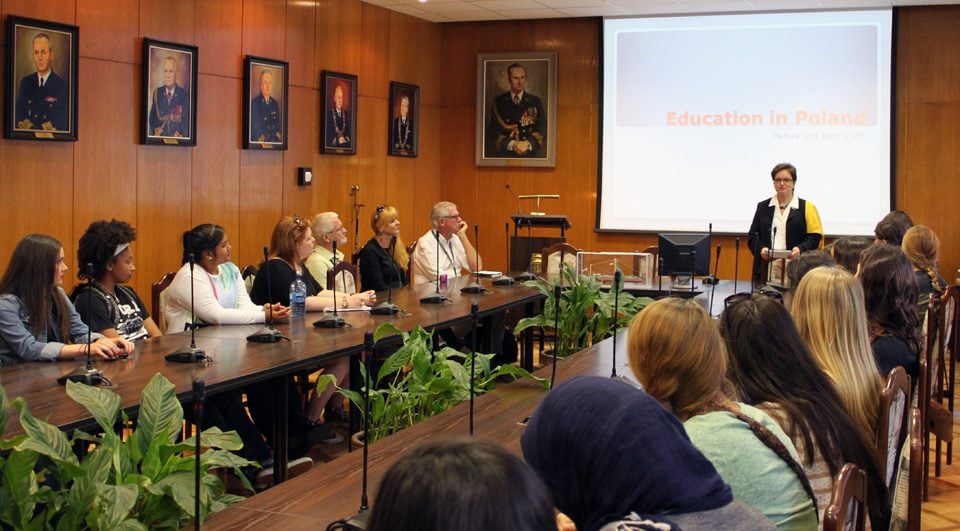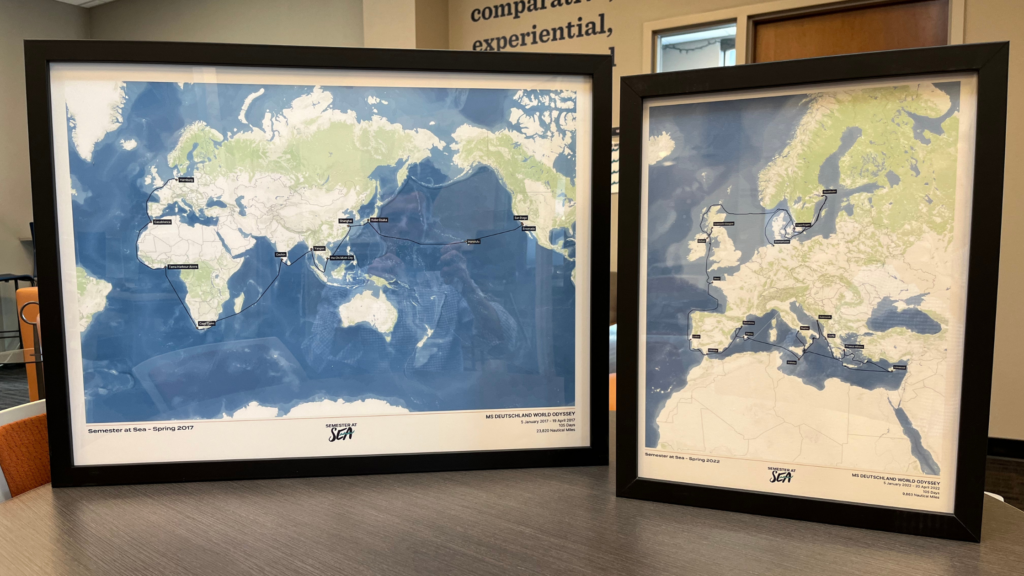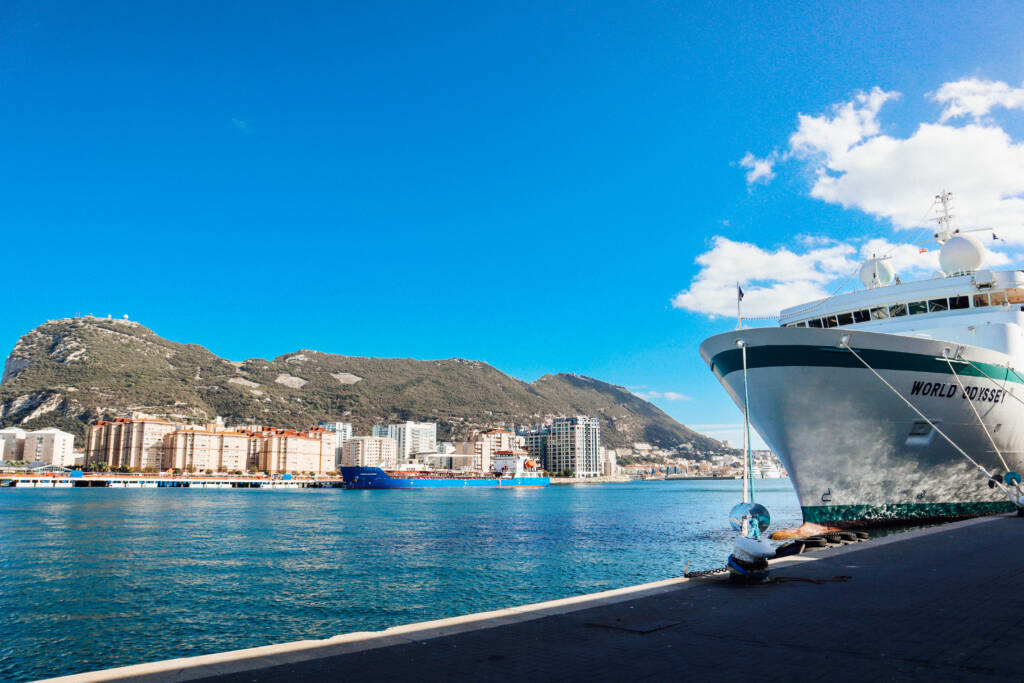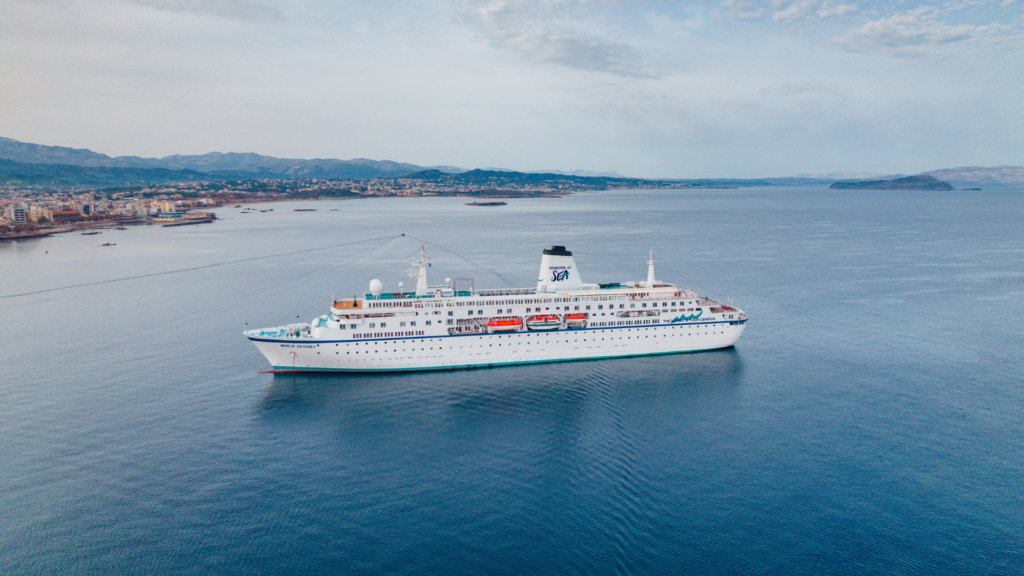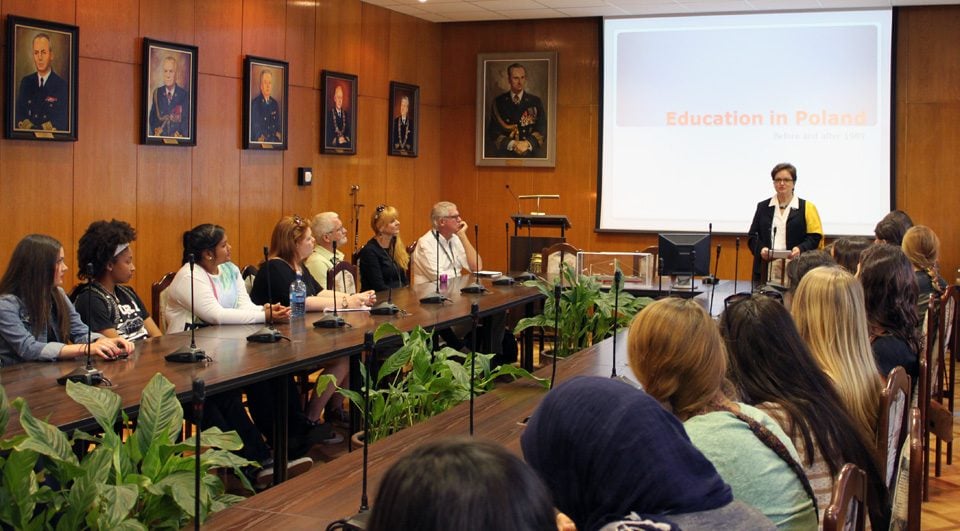
Students in Dan Garvey’s “Theory and Practice of Social Change” class got a fascinating firsthand view of not only how education in Poland evolved after the fall of communism in 1989, but also an insider’s look into the operations of the Polish Naval Academy (PNA).
The academy in Gydina, Poland educates approximately 4,000 civilian students, as well as 200 military cadets who board on campus while training to become officers in the Polish Navy.
Educator Krystyna Wittek has spent 22 years teaching English at PNA, and grew up in Poland’s educational system. With vintage photos — and even historic school supplies like an old-fashioned inkwell and manual straight-edge-blade pencil sharpener — she explained to SAS students what it was like being a pupil in Poland decades ago, when it was a satellite state of the Soviet Union.
Then, Russian was taught as a primary second language, teacher lectures prevailed, and students as young as seven were required to sit and listen for 45 minutes at a time, with their hands behind their backs. It was unheard of for students to question teachers, uniforms were required, schools were run by the state’s ministry of education, and upon graduation from high school, students took exams that would determine their path of higher-level education and whether they would attend comprehensive, technical or vocational schools.
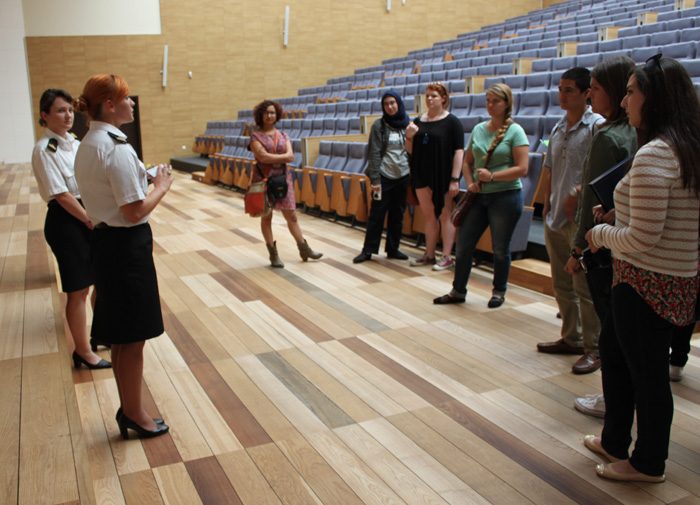
However, educational methods shifted greatly once the Solidarity movement — led by electrician and trade-union activist Lech Walesa — negotiated partially free government elections that took place June 4, 1989. That’s when the Solidarity party won 160 of 161 seats in the parliament of the People’s Republic of Poland (as the state had been known since 1952).
Though it didn’t happen overnight, eventually Polish schools came under the governance of local councils. Parochial and private schools opened, and English became the predominant second language learned. Project-based learning was introduced, and Polish students today are encouraged to challenge their teachers, ask questions, and work in groups to complete assignments — all of which SAS students are very familiar.
While at the Polish Naval Academy, SAS students also heard from Commander Adam Duczmal, who shared some of the history and current practices of the PNA, as well as Ensign Dagmara Broniatowska, who began her naval studies at PNA, then had the opportunity to spend four years in Annapolis, Maryland, at the U.S. Naval Academy, ultimately receiving her undergraduate degree there. She contrasted student life at PNA with USNA, noting that the latter is a much bigger institution (4,000 undergraduates versus 2,000 at PNA). “At Annapolis we had a lot fewer freedoms,” said Ensign Broniatowska. “Everything was right there on campus — including stores, a hair salon… everything we needed. So there was no reason for us to leave.”
After a lively question-and-answer session in the PNA conference room, the SAS group got a tour of the modern campus from Ensign Broniatowska and her colleague Lieutenant Junior Grade Sandra Zarychta. From the light and airy, comprehensive library to the sleek auditorium to the high-tech weapons training room, it was clear that PNA offers students top-notch surroundings and access to the latest in military technology.
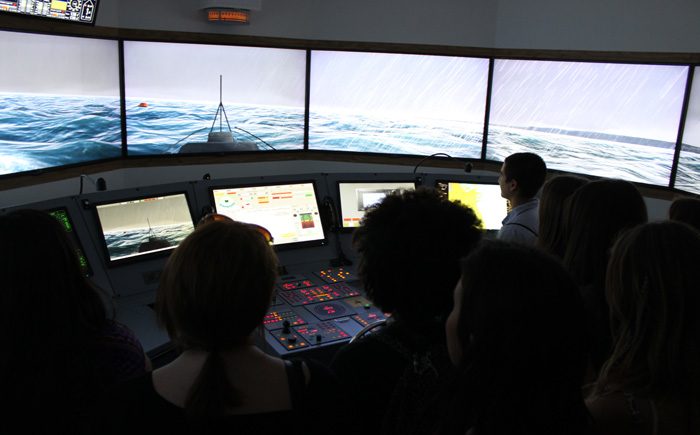
What was most familiar to students sailing with Semester at Sea? The PNA’s state-of-the art “video bridge” that simulated navigating a military ship. Here, cadets are able to learn how to dock a vessel and maneuver in varying states of weather. SAS voyagers know firsthand the sensations of rocking in a ship on the open ocean, and the simulated video version elicited statements such as, “Feels like we’re back on the Explorer!”
In all, the day spent in Gydina, Poland, offered SAS students an exclusive view into the inner workings of how young people are trained to be a part of the Polish military. Professor Dan Garvey pointed out, “We would never have been able to get this close to any military academy in the United States.”
Professor Garvey also noted the relevance of the visit to the social-change theories students had discussed in class this summer, “The educational system and the military are highly important to understanding how a culture works.”
